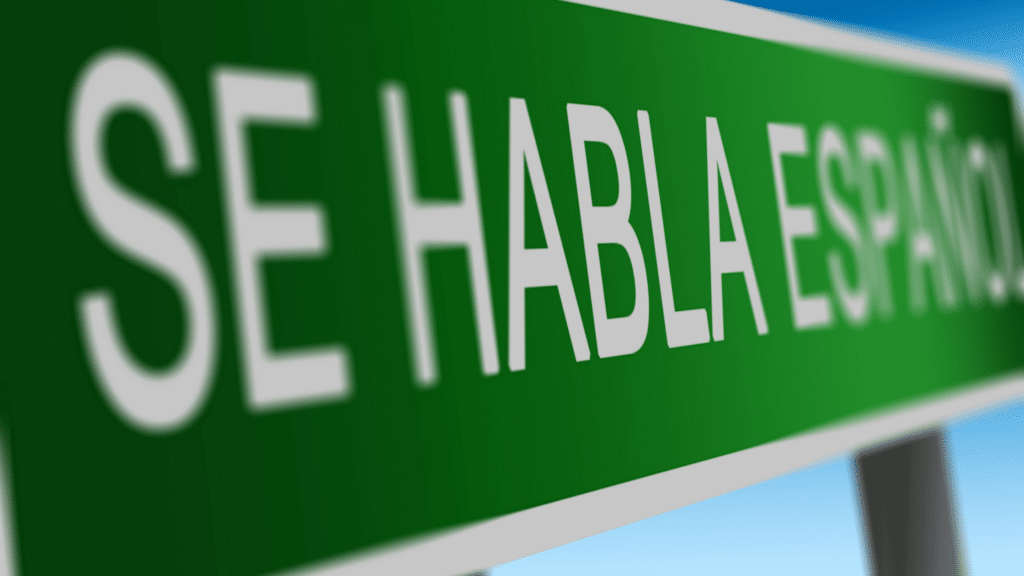
5 Things to Know About Pronunciation in Spanish
Learning a new language comes with many new things: new words, new grammar, new sounds, and maybe even new letters. Sometimes one of the hardest things to master in a new language is the pronunciation or when different sounds correlate to different letters than you are used to. Learning Spanish is no different. There are a few things to know about pronunciation in Spanish as you start your Spanish-speaking journey.
 You do not need to be able to roll your R’s
You do not need to be able to roll your R’s
Many potential Spanish learners think that learning how to produce the Spanish rolled R is a requirement of learning how to speak Spanish. Can you learn Spanish without rolling your R’s ? Although being able to roll R’s would definitely make your Spanish more easily understood by native Spanish speakers, it is not absolutely necessary. There is a whole Spanish-speaking country of people who do not roll their R’s. In fact, they kind of pronounce the rolled R like an American English R. Check out the sound on this video. To see the Dominican variation of the rolled R, check out this clip. If you cannot find a particular country’s way of pronouncing rolled R’s to be satisfactory, or you just really want to learn how to roll your R’s in Spanish and are willing to spend the time and practice necessary to do it, check out this tutorial for how to roll your R’s.
 There is a silent letter in Spanish
There is a silent letter in Spanish
If you are a native English speaker, you know that English has some silent letters. One is even named the silent e. Other examples would be the g in the word through, or the b in the word comb, or the p in the word receipt. Spanish only has one silent letter, and it is silent 100% of the time. That letter is h. That is why the Spanish hello (hola) sounds like ola. It is important to remember that h’s are always silent in Spanish, so that the English sound system does not interfere with your pronunciation of Spanish words and names. For example, habanero should sound like abanero. And Hector should sound like ector. It takes much thought and correction to eliminate the tendency to pronounce h’s in Spanish, but it is definitely necessary!
 J’s sound like H’s
J’s sound like H’s
The Spanish h may be silent, but that does not mean that the English h sound does not exist in Spanish. You can find the English h sound in words such as jalapeño and or in names like José. These words demonstrate that the English h pronunciation takes the form of the letter j in Spanish. The letter name for j in Spanish is jota (pronounced hotah) shows that the letter should be pronounced with an h sound any time it is found in a word. So, jefe is hefe, jungla is hungla, and japonés is haponés. Just like the silent h, you will really have to pay attention to j’s in Spanish and remember to pronounce them with the Spanish sound system and not the English one.
 Double L’s Sound like Y’s
Double L’s Sound like Y’s
There is another letter in Spanish language that can be the bane of a Spanish learner’s existence is actually a set of double letters: LL. Whereas in English, a double LL would be pronounced the same as a single L, Spanish is not so easy. In English a single L is pronounced in a very similar way to the English L. Double LL’s, however, are a different story. The double L sound in Spanish sounds like the sound that an English Y makes at the beginning of words. So, a llama becomes a yama in Spanish. When telling someone your name, it should sound like me yamo (llamo) and not me lamo. As with H’s, and J’s, you must constantly be looking out for double L‘s and making sure that you are pronouncing them with Spanish sound system.

V’s are Pronounced Somewhat like B’s
A pronunciation difference between Spanish and English that does not make a huge difference but is still important is how to pronounce the Spanish letter V. Spanish speakers (except in Venezuela) pronounce V’s very similarly to the English B sound. If a word starts with V, it will sound like the English B. Veinte becomes beinte, violeta sounds like bioleta, and verde is pronounced berde. When you find a V in the middle of a Spanish word, the sound becomes almost like a vibrated B. Imagine the sound of a cell phone vibrating. It is that sound. A light, buzzy B, instead of the hard B sound that English has. Uvas sounds like oob-ahs, llave sounds like yahb-ehs, and ave sounds like ahb-ehs. This sound will be a bit harder to get exactly right, but simply pronouncing any V’s you see in Spanish will give you a huge step in the right direction!

If you need more pronunciation help, check out our free course content here. You can also sign up for lessons with one of our Spanish teachers here!
Want to read more Spanish-related articles? Check out





Responses